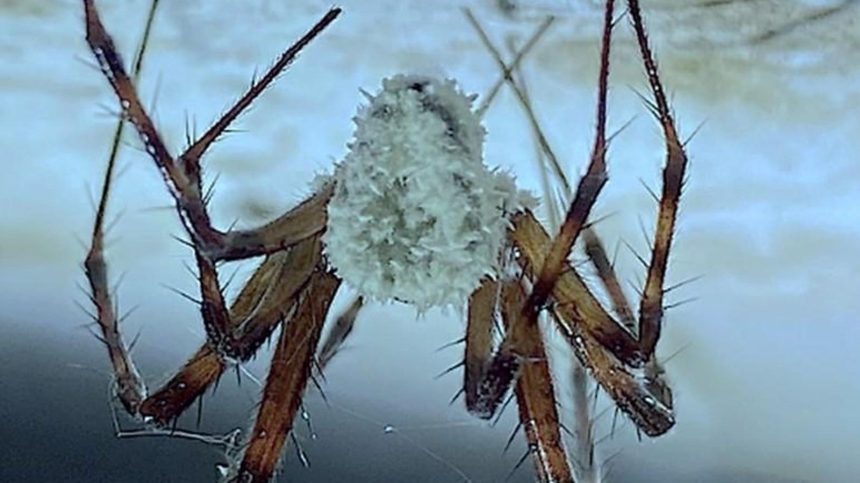The discovery of a fungus that transforms spiders into "zombies" has sparked intrigue, drawing comparisons to the popular horror series "The Last of Us." While the real-world fungus, named Gibellula attenboroughii, doesn’t pose a threat to humans, it presents a gruesome end for certain cave-dwelling orb-weaver spiders. Unlike the fictional depiction of fast-moving hordes of infected individuals, this fungal infection alters the behavior of the spiders, compelling them to abandon their usual habitats and ultimately leading to their demise. This newly discovered fungus adds to the growing body of research on "zombie" fungi, revealing the fascinating, albeit morbid, interplay between parasites and their hosts within the natural world.
The "zombification" process initiated by G. attenboroughii doesn’t involve the dramatic takeover of cognitive functions seen in fictional portrayals. Instead, the fungus subtly manipulates the spiders’ behavior, driving them to leave the safety of their webs and venture into exposed areas. This unusual behavior was first observed in an abandoned gunpowder store in Northern Ireland in 2021, with subsequent discoveries in Irish caves further solidifying the pattern. The infected spiders, normally reclusive denizens of dark corners, were found dead in atypical locations, suggesting the fungus compels them to seek out environments conducive to its own propagation. The white, cotton-like growth of the fungus becomes increasingly prominent as the infection progresses, eventually enveloping the spider’s body.
The mechanism behind this behavioral manipulation lies in the fungus’s reproductive strategy. By driving the spiders into more open and airy locations, the fungus optimizes the dispersal of its spores. The infected, deceased spiders, now transformed into "sporulating cadavers," become platforms for releasing fungal spores into air currents, facilitating the infection of new hosts. This strategy echoes that observed in certain fungi that infect ants in the Brazilian rainforest, highlighting a convergent evolutionary tactic for maximizing reproductive success. The cave environment, with its circulating air currents, provides an ideal setting for the fungus to disseminate its spores throughout the system, ensuring the continuation of its life cycle.
The discovery of G. attenboroughii unfolded during the filming of a BBC nature documentary, "Winterwatch," highlighting the serendipitous nature of scientific breakthroughs. The fungus was named in honor of renowned naturalist Sir David Attenborough, whose work in natural history programming, particularly his contributions to the BBC Natural History Unit, served as inspiration for the research team. The connection to Attenborough adds a layer of poignancy to the discovery, linking the unusual fungus to a figure deeply associated with understanding and appreciating the intricacies of the natural world.
The pop culture phenomenon of "The Last of Us," a video game adapted into a successful HBO series, has brought the concept of fungal zombies into the mainstream. While the fictional depiction of a fast-spreading, brain-controlling fungal infection in humans remains firmly in the realm of fantasy, it draws inspiration from the real-world interactions between fungi and insects, particularly the behavioral manipulation observed in infected ants and now spiders. The fictional fungus in "The Last of Us" spreads primarily through bites, leading to a rapid transformation into aggressive, zombie-like creatures. While the real-world fungi studied by scientists don’t possess the capacity to control human brains, they offer a compelling glimpse into the complex and sometimes macabre relationships between parasites and their hosts.
The discovery of G. attenboroughii underscores the vastness of the fungal kingdom and the potential for uncovering further examples of these fascinating, albeit unsettling, parasitic relationships. The researchers behind the study have called for further investigation into the "hidden diversity" of Gibellula fungi, particularly in the British Isles, suggesting that more species with similar manipulative capabilities may await discovery. Each infected spider, unwittingly playing out its own miniature version of "The Last of Us," contributes to our understanding of the intricate and often surprising dynamics of the natural world. While the fate of these spiders may seem grim, their demise offers valuable insights into the evolutionary strategies of parasitic fungi and the ongoing struggle for survival in the hidden corners of our planet.



